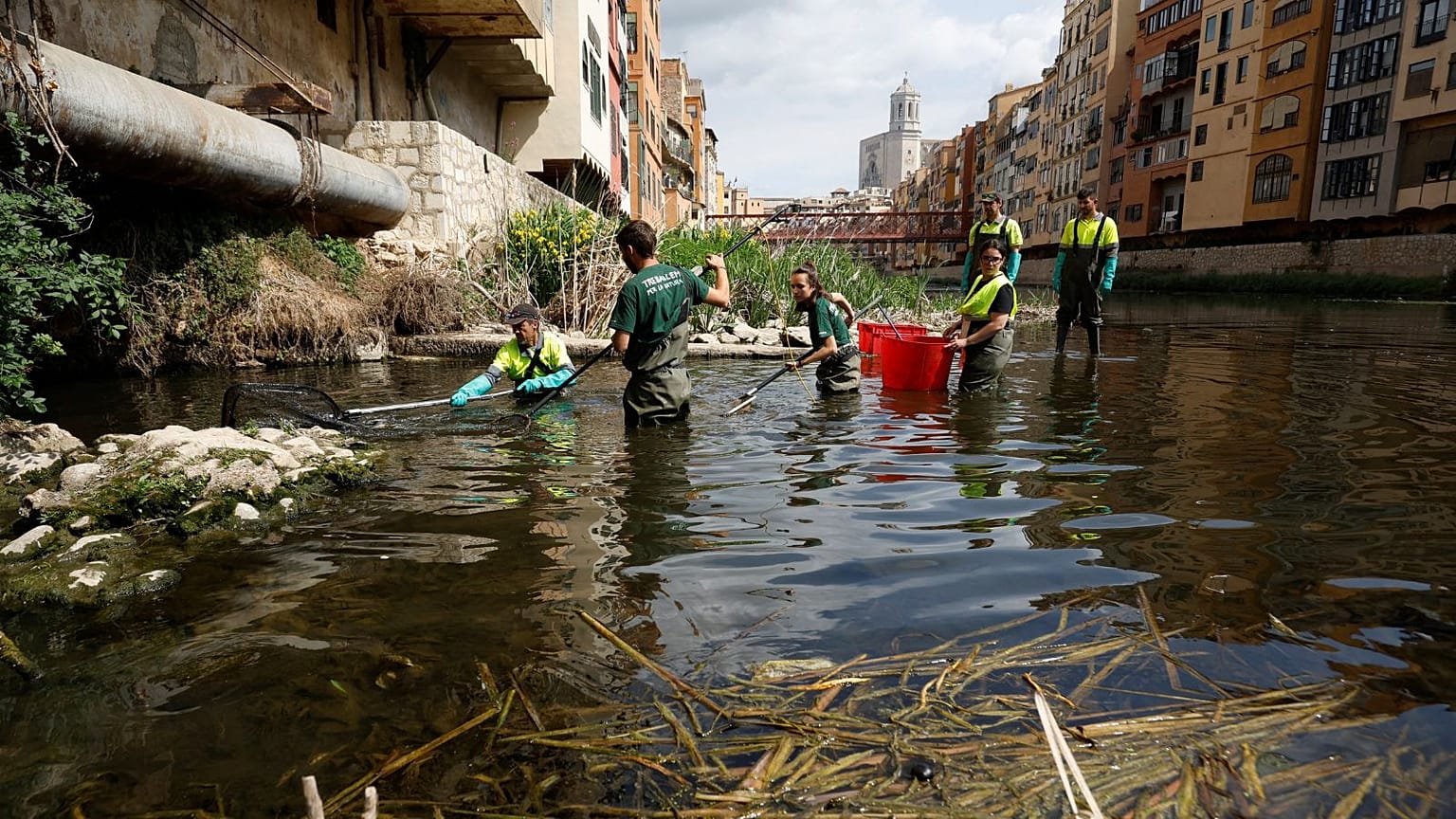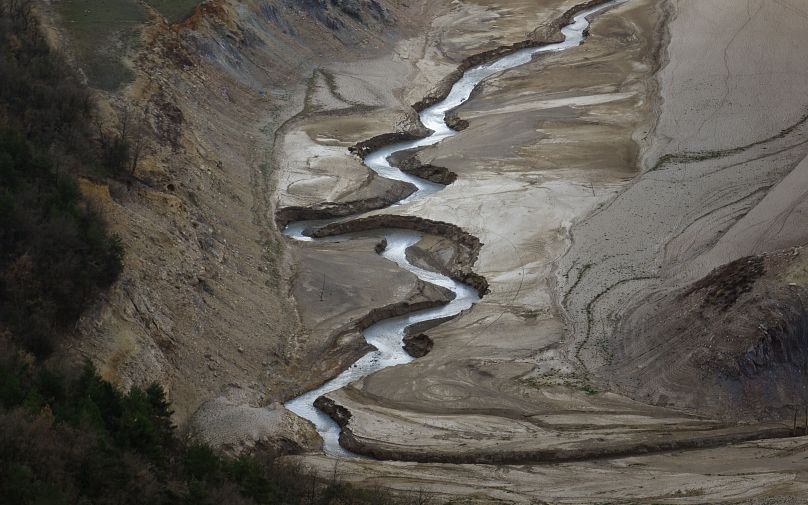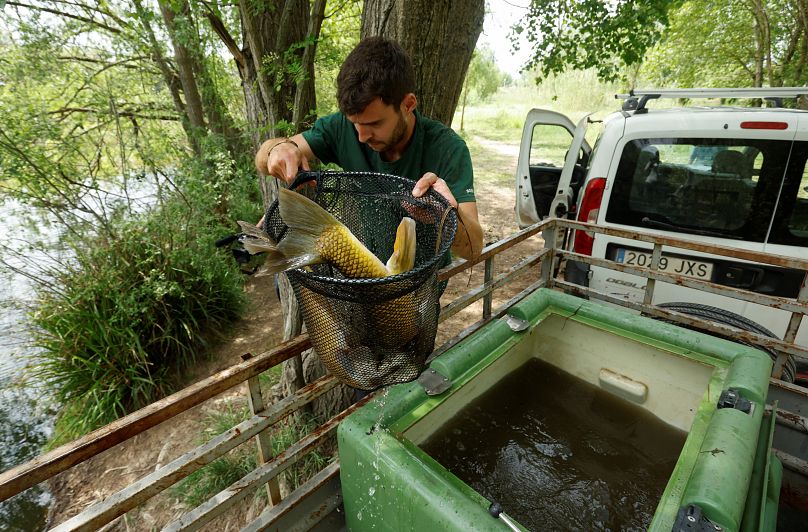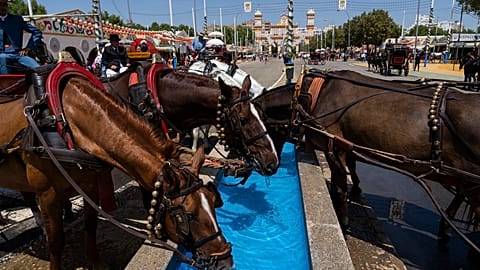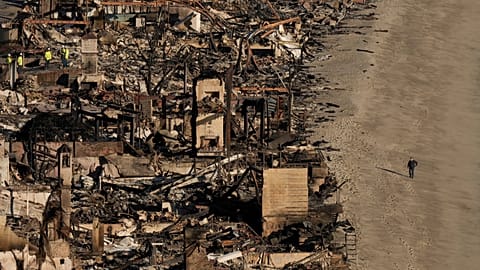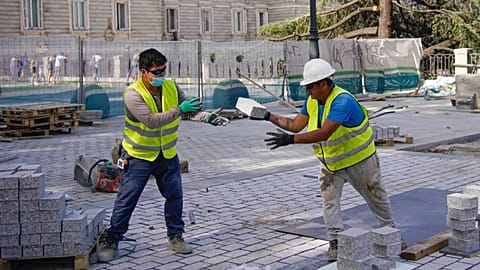Spain has endured 36-consecutive months of below-average rainfall. The drought led to unusual scenes at the River Onyar yesterday.
Fish had to be rescued from a drought-shrivelled river in Spain yesterday as the country bakes under abnormally high temperatures.
In the northeastern city of Girona, officials used small electric shocks to stun native fish in the River Onyar before scooping them into plastic bags. The animals were transferred to the Ter River 10 kilometres away, which has significantly higher water levels.
Spain has endured 36-consecutive months of below-average rainfall. Reservoirs are on average at 50 per cent of their capacity. However in the northeastern region of Catalonia and the southern region of Andalusia, levels have fallen to approximately 25 per cent.
Is Spain’s heatwave due to climate change?
The country is facing unseasonably high temperatures more typical of summer. Meteorological agency AEMET said this month was likely to be the most intense April on the Iberian Peninsula since records began.
"Although each episode needs to be analysed in detail in terms of its intensity and early onset, it fits in with what is being observed to be caused by climate change," AEMET spokesman Ruben del Campo said.
In its annual State of the Climate report, the EU's Copernicus Climate Change Service said that in 2022 southern Europe experienced the highest number of days on record with "very strong heat stress".
Attendees of the annual Seville Fair have sweltered in their traditional Andalusian clothing this week, with temperatures hitting 37C yesterday. A ‘Spanish fan’ is proving to be an essential accessory to stay cool.
“People should protect themselves in the most important hours of the heat, they should be hydrated all the time, you can only hydrate with water, you have to remember that," said Encarnación Aguilar Silva, animal health delegate of Seville City Council.
The council has had to employ more staff and take more precautions due to the heat this year, she added. “Yesterday (25 April) we had more incidents than we usually have in other years. We had 309 incidents, most of them caused by the heat."
Why are some fish euthanised in drought-struck rivers?
Only fish endemic to the River Onya were transferred, while introduced species were euthanised.
The picture of a handful of wading workers trying to save the fish, with the water only reaching their calves, contrasted with January 2019 when the same river overflowed during a storm.
Last month, in the Sau reservoir located 100 km north of Barcelona - which is only 10 per cent full - boats rounded up several tonnes of fish.
The animals struggled to survive in the low-oxygen waters, so they were euthanised to protect drinking water from contamination.















